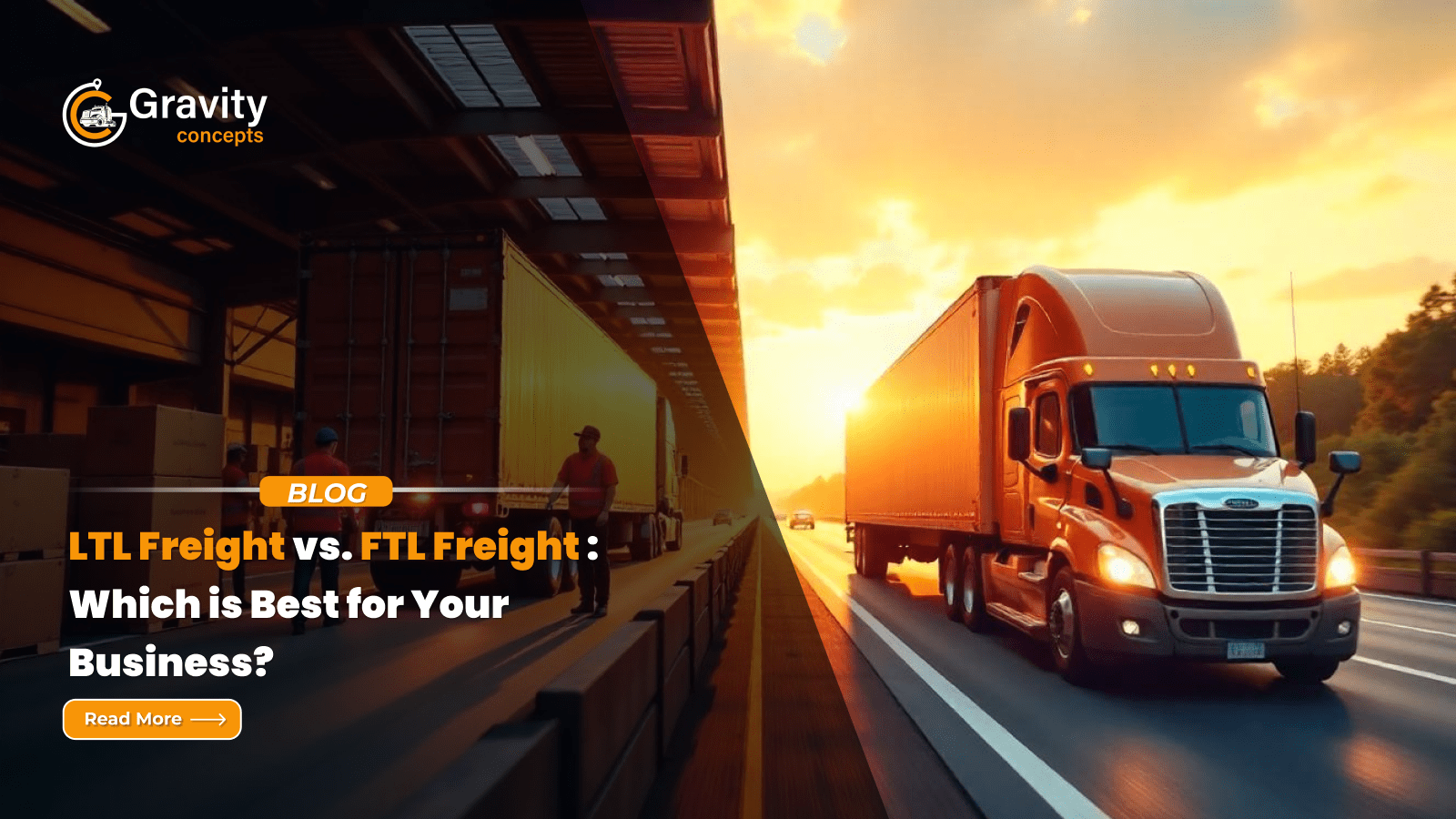
LTL Freight vs. FTL: Which is Best for Your Business?
When it comes to shipping freight, one of the most critical decisions businesses face is choosing between Less Than Truckload (LTL) and Full Truckload (FTL) shipping. Both options have unique advantages and challenges, and selecting the right one can significantly impact your bottom line, delivery timelines, and overall supply chain efficiency.
In this comprehensive guide, we’ll break down the differences between LTL and FTL, explore their benefits and drawbacks, and help you determine which option is the best fit for your business. Whether you’re a small business owner or managing a large enterprise, this blog will equip you with the knowledge to make informed shipping decisions.
What is LTL Freight?
Less Than Truckload (LTL) shipping is designed for businesses that need to transport smaller shipments that don’t require an entire truck. In LTL shipping, your goods share space on a truck with shipments from other businesses, making it a cost-effective solution for smaller loads.
Benefits of LTL Freight
- Cost Savings: You only pay for the space your shipment occupies, making it ideal for businesses with smaller shipping volumes.
- Eco-Friendly: By consolidating multiple shipments, LTL reduces the number of trucks on the road, lowering carbon emissions.
- Flexibility: Perfect for businesses with frequent, smaller shipments or those that don’t have enough goods to fill an entire truck.
Challenges of LTL Freight
- Longer Transit Times: Since LTL shipments make multiple stops, delivery times can be slower compared to FTL.
- Increased Handling: Your goods may be transferred between terminals, increasing the risk of damage or loss.
What is FTL Freight?
Full Truckload (FTL) shipping is ideal for businesses that need to transport large shipments that require an entire truck. This option is best suited for high-volume, heavy, or sensitive goods that need direct transportation from the pickup location to the destination.
Benefits of FTL Freight
- Faster Delivery: With no intermediate stops, FTL ensures quicker transit times.
- Reduced Risk of Damage: Fewer touchpoints mean your goods are handled less, minimizing the risk of damage.
- Ideal for Large Shipments: If you’re shipping in bulk, FTL is often more cost-efficient and reliable.
Challenges of FTL Freight
- Higher Costs: You pay for the entire truck, even if your shipment doesn’t fill it.
- Less Flexibility: FTL is not cost-effective for businesses with smaller or irregular shipping volumes.
Key Differences Between LTL and FTL
To help you decide which option is best for your business, here’s a quick comparison:
| Factor | LTL Freight | FTL Freight |
| Cost | Affordable for small loads | Higher cost, better for bulk shipments |
| Speed | Slower due to multiple stops | Faster, direct transport |
| Handling | More handling, higher risk of damage | Less handling, safer for fragile goods |
| Best For | Small to medium-sized businesses | Businesses shipping in large volumes |
How to Choose the Right Option for Your Business
Choosing between LTL and FTL depends on your specific shipping needs. Here’s a quick guide to help you decide:
When to Choose LTL Freight
- Your shipments are small and don’t require a full truck.
- You’re looking for a budget-friendly shipping solution.
- Your delivery deadlines are flexible.
When to Choose FTL Freight
- Your shipment requires fast and direct transportation.
- You’re transporting fragile, high-value, or time-sensitive goods.
- Your shipments are large enough to fill an entire truck.
Cost Considerations and Optimization Tips
Shipping costs can add up quickly, so it’s essential to optimize your logistics strategy. Here are some tips to help you save money and improve efficiency:
- Evaluate Your Shipping Needs: Regularly review your shipment sizes, destinations, and costs to determine whether LTL or FTL is the better option.
- Freight Consolidation: If you frequently use LTL shipping, consider consolidating shipments to maximize cost savings.
- Partner with a Reliable 3PL: Working with a third-party logistics provider (3PL) can help streamline operations, secure competitive rates, and provide expert guidance.
Real-World Scenarios: LTL vs. FTL in Action
To make this more relatable, let’s look at two examples:
Scenario 1: Small Business Owner
A small e-commerce business ships 10-15 packages daily to customers across the country. Since the shipments are small and don’t require a full truck, LTL shipping is the most cost-effective option. The business saves money by sharing truck space and benefits from flexible delivery timelines.
Scenario 2: Manufacturing Company
A manufacturing company needs to transport 20 pallets of heavy machinery parts from their factory to a distributor. The shipment is large, time-sensitive, and requires careful handling. In this case, FTL shipping is the best choice, ensuring fast delivery and minimal risk of damage.
Conclusion
Both LTL and FTL shipping play vital roles in business logistics, and the right choice depends on your shipment size, budget, and delivery requirements. By understanding the differences between these two options and evaluating your business needs, you can optimize your shipping strategy for cost savings, efficiency, and customer satisfaction.



